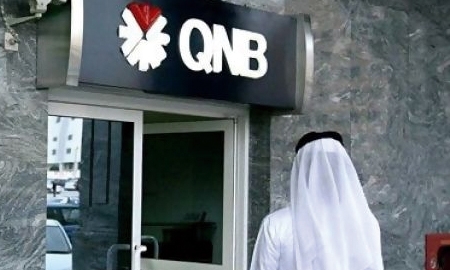If you haven’t already heard of
Qatar National Bank (
QNB), you soon will, as the lender is quickly expanding its footprint in the Middle East and North Africa (MENA) region. And if it continues to grow at the current pace, QNB will soon become one of the biggest global banks.
QNB was founded in 1964 with one clear objective: to help Qatar reach its potential. Fifty years later, it has become a global bank, offering retail, corporate and investment banking services.
From the start, the lender has had a stable shareholder structure, with a 50 percent stake owned by the Qatar Investment Authority. Over a half century, the bank has climbed to first place in the Qatari stock market, with a market capitalisation of over $25 billion. At the beginning of 2012, the bank announced its new strategic plan for the next five years, which aims to make QNB Group a benchmark in Middle East and Africa.
Already the largest financial institution in the MENA region with total assets of QR350 billion (EUR75.3 billion) in June 2012, QNB also has the largest international network of any bank in the region, covering countries in the MENA region, Europe (France, Switzerland and United Kingdom) and Asia.
And on top of that, QNB has the largest market share in the domestic business. The bank’s net profit is equal to nearly half the total profit of the 18 banks in the country and more than the half of their deposits, credit and loans.
The bank’s obsession with growth may have been derived from the need to diversify revenues in order to face the obstacles that may arise in Qatar. According to some experts, the Qatari banks’ margin spreads are expected to come under pressure during the second half of 2012 and through 2013, driven by asset spread contraction.
A Citi report suggests “margins are likely to contract by between 20 and 30 basis points in 2012, due to factors which include a lower demand for higher-yielding local currency loans, and a balance sheet shift towards lower-yielding public sector lending.”
On a systemic level, the report notes, a move by national banks to increase their lending towards the public sector will negatively impact their asset yields. Coupled with a decline in public sector deposits, and funding through more expensive private sector liabilities, should further shrink banks’ net interest margins.
If QNB continues with its current hunger for growth, its international position will be much larger in the near future. Within the space of a few months, QNB has begun the due diligence process to acquire the Egyptian unit of Societe Generale; increased its holding in the Dubai-based Commercial Bank International to 40 percent; acquired an increasing stake in Mansour Bank of Iraq to 51 percent; and acquired a 49 percent stake in Libya’s Bank of Commerce & Development.
It seems QNB is doing its job well, as the latest results show a robust pace of growth. In the first nine months of 2012, net profit rose to QR 6,228 million from QR5,417 million a year earlier.
Early in 2012 this performance was recognised by the magazine The Banker, which ranked QNB Group as the region’s most valued banking brand. In 2012, QNB leaped five places to become the number one brand in the region, and moved up 77 places to 114th amongst the world’s top 500 banking brands.
In a world obsessed with the safety in the financial sector, it’s worth pointing out that QNB Group has also been named one of the World’s 50 safest banks, according to Global Finance magazine. The ranking was created through an evaluation of long-term credit ratings – from Moody’s (Aa3), Standard & Poor’s (A+) and Fitch Ratings (A+) – of the 500 largest banks worldwide.
The quality of QNB’s assets, along with the good projections for the future, are aligned with its current credit ratings, which are the highest in the region and on a par with the best global financial institutions.

0 COMMENTS